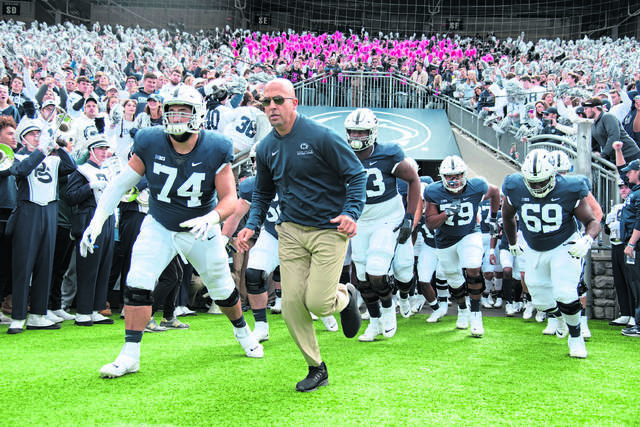James Thrasher: Division I athletics all about the money
During an episode of Lebron James’ online show “The Shop,” California Gov. Gavin Newsome signed into law a bill allowing California student athletes to sign endorsements while in college. The NCAA Board of Governors, having studied this issue for years, responded by announcing that college athletes can “benefit from the use of their name, image or likeness.” The charade of big-name Division I football and basketball athletes being in college first and foremost to receive an education has now been fully exposed.
The media quickly identified the significant impact of this change in the law and NCAA policy on university budgets, broadcasting companies, the NCAA, the Olympics, families of athletes, recruiting, eligibility and multiple legal issues. But wait, isn’t something missing?
Something truly fundamentally important to this discussion is absent: Academics! Are these athletes students, or are they commodities to be marketed? And are they to be discarded by the university upon the end of their college athletic career, having gained very little tangibly from their educational experience, minimal actual learning, or even a degree? We should be more interested in giving all athletes the ability to earn a living post-college through an actual education rather than paying a few select athletes for a short time while in college.
What we have here is a serious collision of callings: education vs. athletics as a business and the pursuit of the almighty dollar. Division I sports has commandeered the high calling of pursuing a viable, earned education, and college athletics has known it all along. James Odenkirk, in his article in Academe, “Intercollegiate Athletics—Big Business or Sport?” notes the concern about mixing academics and athletics emerged early in the 1900s. He states that “before the universities realized it, they were knee deep in the entertainment business, and the stakes were enormous.”
It seems that hardly anyone is addressing the “piling-on effect” of California’s legislation and the NCAA decision on student learning and success. Shouldn’t that be the primary focus of this discussion? But it isn’t. It is about the money, the big business of college sports. A serious commitment to academics went out the window years ago as the NCAA prioritized revenue and entertainment ahead of investing in, providing for and preparing the individual student. We all have been blinded by the allure of prime-time college sports.
Arizona State University’s Global Sports Institute found that universities receive more than $14 billion in overall annual athletic revenue. The NCAA, a nonprofit governing body, claims $1 billion of this revenue each year. Mark Emmert, the president of the NCAA, received a total financial benefits package of $3.9 million last year. College athletics also is a cash cow for apparel companies such as Nike, Under Armour and Adidas. The major networks and ESPN also cash in and make billions.
The truth be known — it was never about academics. “14 Surprising Facts About Being a College Athlete” by BestCollegesOnline.com reveals some shocking statistics about graduation rates for the 68 teams playing in the March Madness basketball tournament: the average graduation rate was 43%, with six teams under 20%, two under 10% and one under 5%. This concern is compounded by the fact that only 1.2% of college basketball players get drafted by the NBA. Yes, just above 1%. So, one out of 100 players goes to the NBA, and less than 50% actually graduate with a degree that can earn them a job outside of the basketball world. But who cares, right? In 2019, the five-week tournament produced $1.3 billion in ad revenue.
The NCAA website speaks of the association’s commitment and responsibility to students academically: “Graduating from college is an important achievement. We embrace our role in providing student athletes the skills for what comes next in life.” The NCAA claims that Division I athletes have found a balance between athletics and studies. It even says that Division 1 football and basketball players are regular students who just happen to play sports.
Reality paints a different picture. Many student athletes are putting in 40 hours of practice and game time a week. These athletes report that, beyond team commitments, they do not have time for personal responsibilities and even sleep. So now added to the athlete’s schedule is that time required to manage a business marketing their brand in the public square? Where does the priority of academic classes fit in this picture? Nowhere.
The jig is finally up. California’s legislation and the NCAA decision are finally, for all to see, a declaration of the truth. Big-time college sports is about money, entertainment and big business, and not about academically investing in the students who, ironically, make it all possible. Academic success for student athletes is a hit-or-miss byproduct of the NCAA’s contrived “money train” system.
Dr. James Thrasher is senior fellow of Grove City College’s career services office and coordinator of the Institute for Faith & Freedom’s working group on calling.
Remove the ads from your TribLIVE reading experience but still support the journalists who create the content with TribLIVE Ad-Free.

